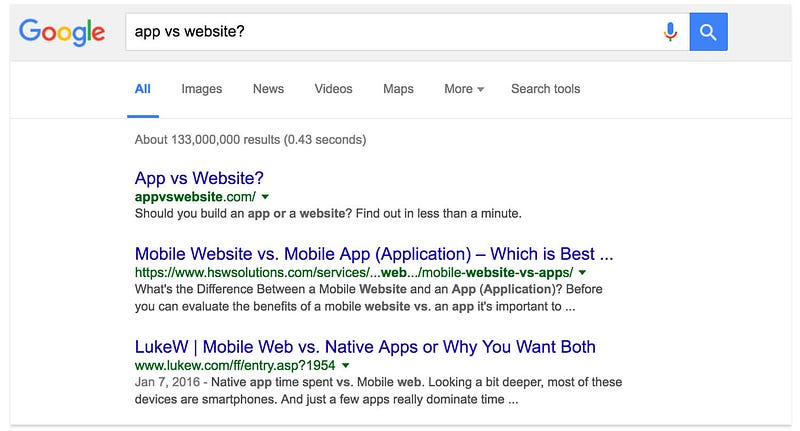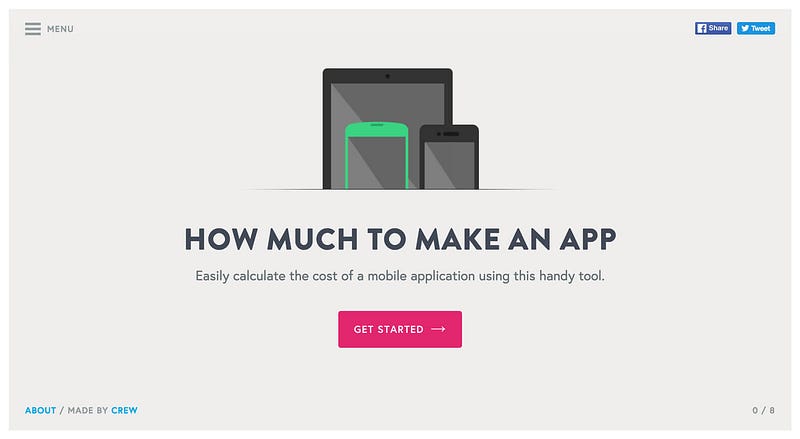
62 percent.
That’s the percentage of Crew’s revenue driven by our side projects last week alone following the launch of one of our latest tools.
Every time I see such high ROI on our side project marketing efforts, I feel this urgent need to convince every single one of my startup friends to stop wasting their money on ads or writing those sad listicles to grab more eyeballs.
Side projects help your business connect with only those that matter by creating lasting value instead of renting their short-term attention using aggressive shortcuts.
In a previous essay, I tried to explain why side project marketing is taking over the world and made a further analysis in the first lesson of Make This Year.
In this post, I want to share a practical approach to how to come up with side project ideas.
Before we start, allow me to quickly recap three things about side project marketing:
- Taking time and effort away from building your business to work on a side project is a big choice and one that isn’t for everyone. It’s a choice that you and your team will have to make on your own.
- But once you get in the serial making mood, you’ll quickly notice that side projects can be way less distracting than other marketing methods you use to create value for your business. Some side projects take less time and effort to launch than it takes to write a blog post, and they bring higher ROI.
- Today, there is a free tool for almost everything and you don’t necessarily have to hire a designer or developer to launch your side project. You can always start small and decide later whether to hire some help.
One of the most striking things about side project marketing is to realize how strongly it’s linked to creating value for your audience. The answer to ‘How do I come up with side project ideas?’ is almost the same as to ‘How do I create value for my customers?’.
If you read ‘Side Project Marketing is The New King’, you probably remember I used Brian Clark’s golden rule of marketing to explain the relationship between value creation and sales:
Give something valuable away in order to sell something related.
Remember that the intention here is not to find a sneaky shortcut to make a sale but to create value for others through tools, apps, websites, or software — value that is related to our core business, but built ‘on the side’ without losing our main focus.
Let’s look at some powerful ways to come up with side project ideas. And while there are other options, I tried to cover the processes that’ve helped us ship at least one project a month.
1. Catch key decision breakpoints — (X vs Y)
One of the most valuable side projects you can build is a tool that helps your potential customers decide between different options they face when buying your product or service.
Let me explain with four examples:
1.1. Decision breakpoints: Core product variations
Most products and services usually come with different models or variations that your clients need to choose from, such as deciding whether to buy an iPhone 5 or 6. So ask yourself, can you build a tool that helps them choose the best option for their needs?
Here’s one tool we built which became one of our most successful side projects:

At Crew, we match our clients with the high-quality designers and developers in our network so they can build things like apps, websites, and branding assets. But many potential customers aren’t even sure whether to build a website or an app. So we built http://APPvsWebsite.com — a quick tool that will help you understand which platform your product belongs on just by answering a few simple questions.
The result? The number of people who use such tools might leave you speechless. They also bring impressive amount of search traffic.

Think about how you could apply this to your own business. Are you selling bikes? What different types of bikes do you offer? Mountain bikes? Road bikes? Hybrid, cruiser, folding bikes? What about creating a tool that will help your potential customers choose which option is best for them?
1.2. Decision breakpoints: Core product substitutes
Sometimes it’s not just different models your potential clients are choosing, but rather similar, yet substitutable, products.
For instance, if potential entrepreneur clients decide not to hire a designer or developer through Crew, how else can they build their app?
Well, for one, they can learn to design and code themselves instead of hiring people. So, how about a tool that compares hiring coders vs learning to code? Or a course on how to take a digital product idea from idea to execution?
Let’s think about our bike retailer example again. What other transportation options do people have? Walking? Bus? Subway? Buy a car? How about making a tool comparing all of the alternatives?
1.3. Decision breakpoints: Your competitors
If people don’t buy from you, who else is selling a similar product out there?
Type ‘Buffer’ in Google and first thing you’ll see is an ad from their competitor Hootsuite:

The interesting thing is when you click on it, Hootsuite’s tool is actually helpful to understand the difference between the two companies.
While some might argue the ethics of a move like this (all is fair in love and advertising!), when done in a transparent and honest way it can not only help to steal customers away from your competitors, but also help filter potential users before you spend any time on them at all.
1.4. Decision breakpoints: Related benefits
Your potential customers deal with many other problems that are related to the core problem your product solves. And there’s no better way to keep a happy, returning customer than give them more value than they ever expected (or asked for!)
So what other related problems do they have? And what are the dilemmas they face when trying to solve those problems?
At Crew, the issues our customers have don’t end when they finish building their app or designing their site at Crew. In fact, that’s usually just the beginning for a startup or small business. And while their ‘business transaction’ technically ends when the final product ships, we’ve found that providing value in the period right after the product is ready is a great way to keep people happy.
For example, most of the people we work with are startups or small businesses who work remotely and often asynchronously.
So a huge issue many of them face is keeping up with their communication. To help them decide which app they should use to manage their teams, we built http://slackvshipchat.com

Don’t constrain yourself to thinking that a side project has to be a tool or website. SlackvsHipchat is almost like a long-form blog post, just displayed in a way that makes it more appealing and exciting for potential customers.
2. Help your customers get better at what they do
Alright. So we’ve seen the opportunities to create side projects based around your customer’s decision breakpoints. But there’s another great well of side project ideas you can pull from: Education.
Creating value starts with putting yourselves in your customer’s shoes and understanding how their problems don’t end when they buy your product.
Instead, they usually have a much bigger problem to solve, and want to get better at solving it. Here’s a couple examples of how you can give them that power.
Frontapp builds a tool that helps companies provide customer support, but a huge part of good support is good communication. So they built http://www.goodemailcopy.com — a side project site that offers best-in-class copy examples from great companies to inspire and educate their potential customers.
Similarly, at Crew, our potential clients don’t just want to build an app or a site, they want to build a business. That’s why one of our most successful projects offers them a beginner’s guide to building an online business, while another helps them boost their revenue.
Take a step back and think about all of the ways your customer measures success, not just the one you are directly trying to provide. Creating that level of big picture value creates lifelong customers.
3. Do the legwork
Let’s stay in our customer’s shoes. Every person and business has limited resources, which is why they appreciate it when you make things easier for them.
One of the best ways to do that is to do the legwork for them. Find ways to help them work smarter and break through the constraints they’re currently facing, whether they’re time, financial, physical, or emotional.
Bonsai knows its freelance customers have limited time so, one of their most successful side projects does the legwork of bringing hundreds of useful freelancing tools together into one place.
While the folks at InVision knew their audience of designers would appreciate a free giant package of UI kit.
At Crew, we do the legwork for our customers and creative community with tools like Coffee & Power, which brings together a collection of coffee shops with that unicorn combination of good coffee, good Wi-Fi, and plenty of power plugs. We also know how hard it is for anyone, from designers to writers to founders, to find good photos, so Unsplash brings together tens of thousands of royalty-free photos that don’t suck by the best photographers out there.
What about you? Where can you use your expertise to do the legwork for your community?
4. Free tools for lead generation
While the tools we’ve talked about so far don’t directly focus on attracting prospects, free lead generation tools help you pinpoint high-quality leads by offering something useful to your potential customers.
Here’s a few great examples:
4.1. Offer one or few features of your core product as a standalone product and give it away for free.
Some great examples include Open Site Explorer by Moz or Notifier by Content Marketer.
4.2. Build a tool that solves ‘microproblems’.
For instance, Hubspot sells inbound marketing software but to be successful at inbound marketing (core problem):
- People need to understand who their ideal customer is (micro problem). So Hubspot offers a side project called Make my Persona, quick and easy buyer persona development for your inbound marketing strategy.
- People need to understand how their website performs (micro problem). So Hubspot offers a side project called Website Grader, a free online tool that grades your site against key metrics like performance, mobile readiness, SEO, and security.
4.3. Build a tool around things that stop your customers from buying your product.
For instance, at Crew, one of the things that gets in the way of people hiring a creative to build a website or an app is cost. So we offer tools that estimate how much a website, an app, or a logo costs. These tools drive most of our revenue we generate from side project marketing.

It’s not complicated
Of course there are many other ways you can create value using side project marketing. You can build something totally out of the box, inspire your customers, or create emotional connections.
But the problem isn’t really coming up with side project ideas. It’s the challenge of being able to move away from the self-centered ‘me me me’ marketing trap and focus on building things that are useful to your audience. Nobody cares about your business, they care about how they look in front of their customers. They care about how they can get better at what they do. They care about how to impress their own clients.
And side project marketing helps you to do exactly that — to move away from ‘me-focused’ marketing and start seeing how you can actually help, be useful, and create extreme value for your customers.
Get the TNW newsletter
Get the most important tech news in your inbox each week.




